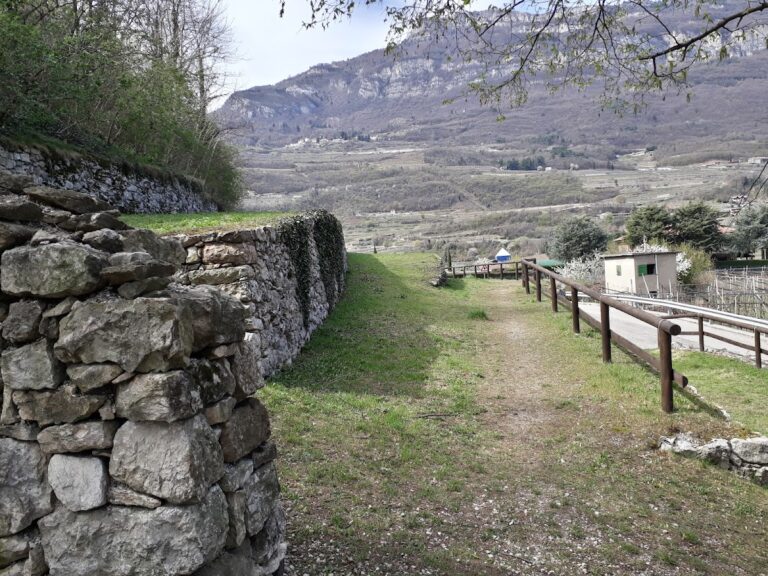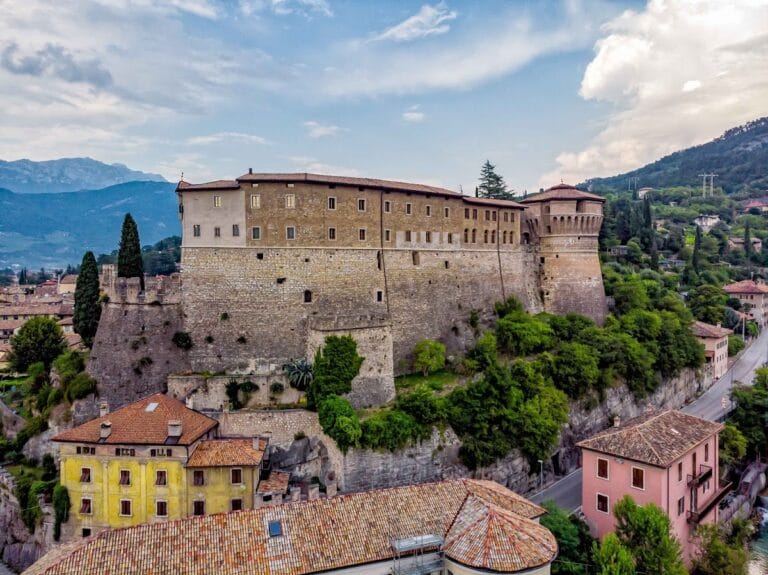Castel Corno: A Medieval Fortress in Isera, Italy
Visitor Information
Google Rating: 4.4
Popularity: Very Low
Google Maps: View on Google Maps
Country: Italy
Civilization: Unclassified
Remains: Military
History
Castel Corno is situated within the municipality of Isera in Italy. The fortress was established by medieval European nobility and reflects the region’s complex feudal relations during the Middle Ages and beyond.
The origins of Castel Corno likely reach back to the 10th century, but it first appears in historical records in 1178. Initially, the castle was under the control of several noble families, chiefly the Lords of Castelcorno, who were linked by blood or alliance to the Lords of Lizzana and Brentonico. From 1234 to 1242, the fief came under the possession of Aldrighetto di Toblino.
In the mid-14th century, the castle’s ownership shifted when the Prince-Bishop of Trento, Mainardo of Neuhaus, granted the fief to the Castelbarco family. This line maintained authority until a pivotal event in 1456, when the Lodron family seized control of Castel Corno along with other nearby strongholds. The Lodron justified this takeover by accusing the Castelbarco of refusing to acknowledge the religious and political leadership of the Prince-Bishop of Trento, signaling the intertwined nature of feudal and ecclesiastical power at the time.
A dramatic moment in the castle’s history occurred in 1487, when a duel took place near its walls between Antonio Maria Sanseverino and Count Giovanni di Sonnenburg. This confrontation ended with Sonnenburg’s victory and highlights martial customs among the nobility during this era.
Following the end of the Castelbarco-Castelcorno family line in 1499, the Prince-Bishop Udalrico Lichtenstein rewarded his brother Paolo by granting him ownership of the castle. Paolo’s lineage maintained possession until 1762, illustrating a period of relative stability. During the 18th century, the castle returned to the Prince-Bishop’s direct control but gradually fell into decline.
In modern times, Castel Corno was sold in 1897 to the Municipality of Lenzima. During World War I, it served as an Austrian military observation and artillery position, which inflicted significant damage on the structure. Since 1928, stewardship has rested with the Municipality of Isera. From 1987 onward, the Museo Civico di Rovereto conducted thorough historical research and archaeological studies, reconstructing the castle’s layout and identifying the purpose of its various rooms, thus contributing valuable insights into its historical functions.
Remains
Castel Corno occupies a commanding position atop Monte Biaena, at an elevation of 846 meters, encompassing roughly 2,300 square meters. The fortress integrates seamlessly with the natural contours of the site, presenting a layout that is dispersed in appearance but structurally compact and cohesive.
The castle is divided into two main sections. The older, upper part covers approximately 1,450 square meters and represents the original medieval core. Adjacent to it lies the newer, lower castle, occupying around 850 square meters, reflecting later expansions. At the center of the courtyard stands a tower dating from the 16th century, marking an important addition to the complex during that period.
As a defensive structure, Castel Corno primarily functioned as a lookout rather than a heavily fortified stronghold. It lacked typical protective elements such as moats or drawbridges. Instead, its defense depended on the challenging access route, which ascends through three successive gates, supplemented by a patrol walkway known as the passerella di ronda, allowing guards to monitor the perimeter.
Two terraces face toward the Adige Valley, providing vantage points for overseeing both the river and the road running alongside it. These features highlight the castle’s role in controlling key communication and transportation routes during its occupation.
Due to its positioning, the castle was rarely visible from the valley floor, contributing to the limited number of battles in its vicinity. Its strategic value lay in deterring sieges rather than direct assaults. The structure sustained damage during the First World War when utilized by Austrian forces, though portions have since undergone partial restoration.
No specific inscriptions or decorative elements have been recorded on site. Similarly, no archaeological discoveries such as tools or pottery have been documented. The comprehensive studies by the Museo Civico di Rovereto have been instrumental in understanding the castle’s spatial organization, but the site remains valued mainly for its historical presence and role within the medieval landscape rather than for elaborate architectural embellishments.










